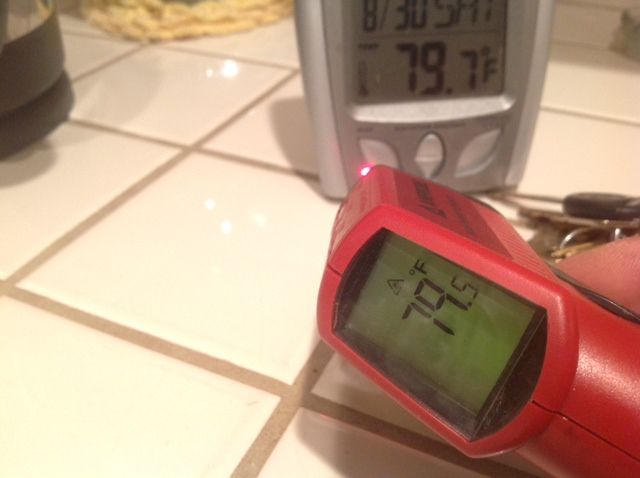Sort of. The cup will reach the same temperature as the water over time. How much time depends on the thermal conductivity constant for the material of the cup. A styrofoam cup will take forever, an aluminum cup will take a minute or two. If you're checking the temperature of the water by pointing the infrared thermometer at an aluminum intake manifold next to your temp sending unit, it doesn't take much time at all for the aluminum to be the same temp as the water. Yes, the temperature curve on the aluminum will be slightly delayed compared to the temp curve on the water, but it's not an irrelevant way to check the gauge, it just won't be a perfect match. Cast iron would be slower to react, the rubber hoses slower still. Just depends on what you point the infrared thermometer at. And if it's a infrared thermometer from harbor freight, that's another source is error right there.

















